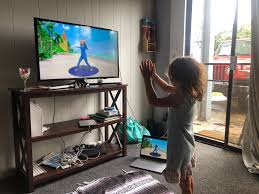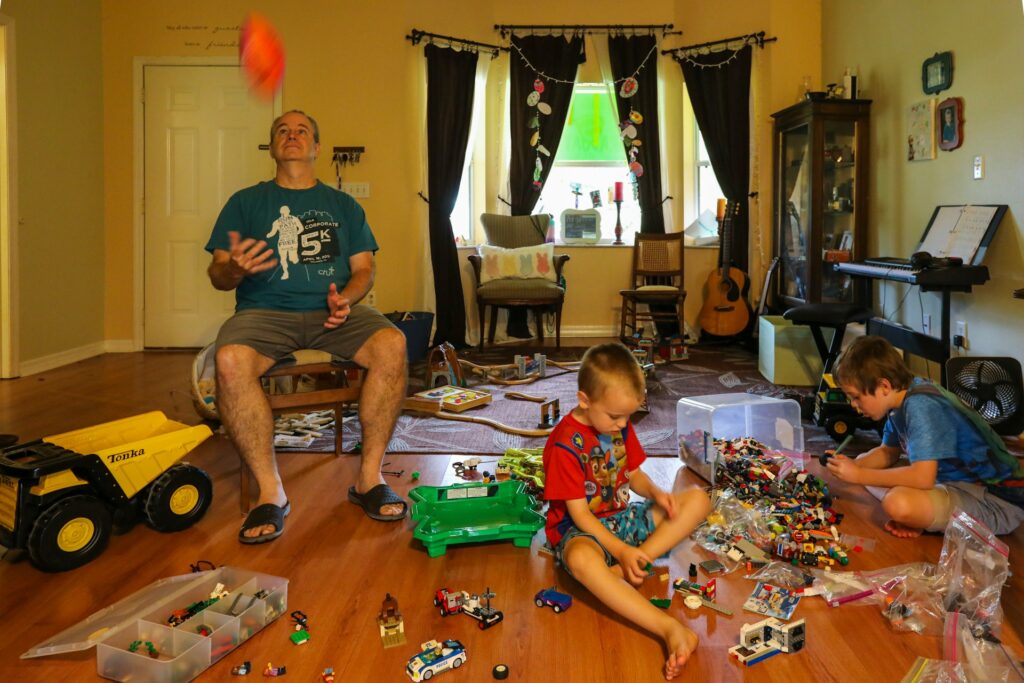As a dad trying to navigate the maze of modern parenting, one thing is for sure: screens are everywhere. From the tablet my preschooler plays on to the TV we watch together after dinner, it sometimes feels like I can’t go a day without interacting with some form of technology. And, let’s be honest, there are days when a few minutes of screen time feels like a lifesaver—whether it’s keeping my child entertained while I finish up a work call or giving me a moment of quiet during a hectic afternoon. But when it comes to preschoolers, screen time isn’t always as simple as a quick fix.
I’ve spent a lot of time wondering about the right balance when it comes to screen time—how much is too much, and how can I ensure that the time spent in front of a screen is actually benefiting my child? As a tired dad with a million things on my plate, finding that sweet spot between entertainment, education, and other important activities can feel like a daunting task. It’s like walking a tightrope, trying to make sure my kids aren’t missing out on things like outdoor play or family time, while still acknowledging that screens, when used the right way, can have educational value.
When you really stop to think about it, the role of screen time in our kids’ lives is complicated. On one hand, it’s practically impossible to avoid screens in today’s world, so it only makes sense that kids will be exposed to them early on. But on the other hand, too much screen time can have negative effects, from hindering social skills to affecting sleep patterns. So, what’s the right approach? How can we make sure that screen time is used in a way that supports our children’s growth without overshadowing the other, more traditional forms of learning and play?
From my experience and after reading about it, the key lies in understanding the role of screen time in a preschooler’s life. Screens aren’t inherently bad—they can be a powerful tool for learning and entertainment if used in moderation and with intention. But the challenge lies in balancing screen time with other crucial developmental activities, like physical play, socializing with peers, and engaging in creative tasks.
One thing I’ve come to realize is that not all screen time is created equal. It’s important to pay attention to what my child is actually watching or playing on the device. Educational apps and programs can actually offer valuable learning experiences—helping with early literacy, math skills, or problem-solving in fun, interactive ways. But mindless, passive consumption—like endless cartoons or videos—doesn’t provide the same developmental benefits.
As a tired dad, I also have to consider how much time my child spends in front of a screen. Too much screen time can lead to issues like difficulty focusing, disrupted sleep, or a lack of interest in other activities. It’s about setting limits that make sense for our family and our routine. I’ve found that keeping screen time to a specific duration, like 30 minutes a day, works best for us. The key is consistency—making sure my preschooler knows what to expect, while still allowing room for flexibility when needed.
But managing screen time isn’t just about the quantity—it’s also about the quality. That’s why I’ve started to focus on using screens together with my child, rather than leaving them to their own devices (pun intended). Watching a short educational video and then discussing it together helps my preschooler process the information and connect it to real-world experiences. I’ve found that joint screen time also helps prevent the kind of disengagement that can come with too much passive viewing. Plus, it’s a good bonding experience, and it keeps me involved in their digital world.
And then there’s the issue of screen-free time. It’s crucial to make sure there are plenty of moments in our day when screens are turned off entirely. Getting outside to play, building something with blocks, or reading together are essential activities that promote creativity, social skills, and physical development. I’ve found that making these activities a regular part of our daily routine creates a healthy balance with screen time, ensuring that my child isn’t overly reliant on digital entertainment.
One thing I’ve learned is that it’s also about setting the right example. As a dad who spends a fair amount of time on my phone or computer, I’ve had to be more mindful of how often I’m on a screen in front of my kids. Modeling healthy screen habits can make a huge difference in how they view and use screens themselves. When I take breaks from my own screen time and engage in activities like playing outside or reading, it encourages them to do the same.
Navigating screen time doesn’t have to be an overwhelming task. With a little thought and planning, I can make sure that screen time is beneficial rather than detrimental to my child’s development. It’s all about finding that balance and being mindful of how and when screens are used. If you’re looking for more tips on managing screen time for preschoolers, I found this helpful article that breaks it down even further: Navigating Screen Time: Efficient Strategies for Preschoolers. It’s full of practical strategies that have made my own approach to screen time much easier to manage.
At the end of the day, it’s all about creating a balanced approach that works for our family—one where screen time is just another tool in the box, rather than the focus of our day. As a tired dad, finding that balance can be tough, but when I see how my kids benefit from both screen time and offline activities, it’s all worth it.



